What You Need To Know About California ADA Laws
When it comes to ADA laws and guidelines, there is a lot to take in. ADA Law has been around since 1990, ensuring that all persons with disabilities have access to everything that those without do and ensures that no discriminatory practices happen. In our post, Are You ADA Compliant?, we highlighted a small portion of that article to discuss California ADA. Today we will be expanding on that a bit more.
Recommended Article: Are You ADA Compliant?
California: Why Different Guidelines?
According to California law, any violation of the Americans with Disabilities Act is considered a civil rights violation. This is subject to a minimum penalty of $4,000, plus attorney’s fees. California’s state government has set up its own codes and standards. (Yes, they still follow Federal guidelines). These laws have been updated as recently as 2019. Most of these guidelines go with the CBC (California Building Code) and can be found on their Government’s website.
What is CBC?
Several thousand accessibility regulations have been changed in the 2013 CBC to ensure that the ADA regulations are upheld, this also includes changing the numbering format.
Maintained by the California Building Standards Commission, it grants authority to oversee processes related to the California building codes under Title Standards Law. The CBC under Title 24 is established on several criteria.
– Standards adopted by states based on national codes
– Standards passed by the California legislator that address concerns specific to California.
What are the Requirements?
Instead of one sign required for every restroom, California law states, that two signs are required. (For every public restroom). The California-mandated signs should feature two geometric tactile symbols with no braille, text, or pictograms. This is because California residents have learned how to identify the signs by the look and feel.
In California, under Title 24 of the state’s Building Standards Code, all doors leading to a public restroom must be clearly identified by a geometric symbol/. Door signs for single-occupancy restrooms must consist of a ¼-inch thick equilateral triangle with 12-inch edges within a ¼-inch circle with a 12-inch diameter.
Tactile paving: Truncated dome requirements in California follow the 2010 ADA Standards. They must have a base diameter anywhere from 0.9 to 1.4 inches wide and 0.2 inches high. There are legal requirements for color contrast as well; all detectable warning surfaces must contrast as light-on-dark or dark-on-light. Detectable warnings on a platform edge must be 24 inches wide and extend the full length of any public use area.

Inspection checklist
To ensure that your signage is up to date with California ADA, make sure to do a walk around your office or building to make note of any areas that may need to be updated.
– Places where wayfinding signage should be
– Areas that do not have tactile signage
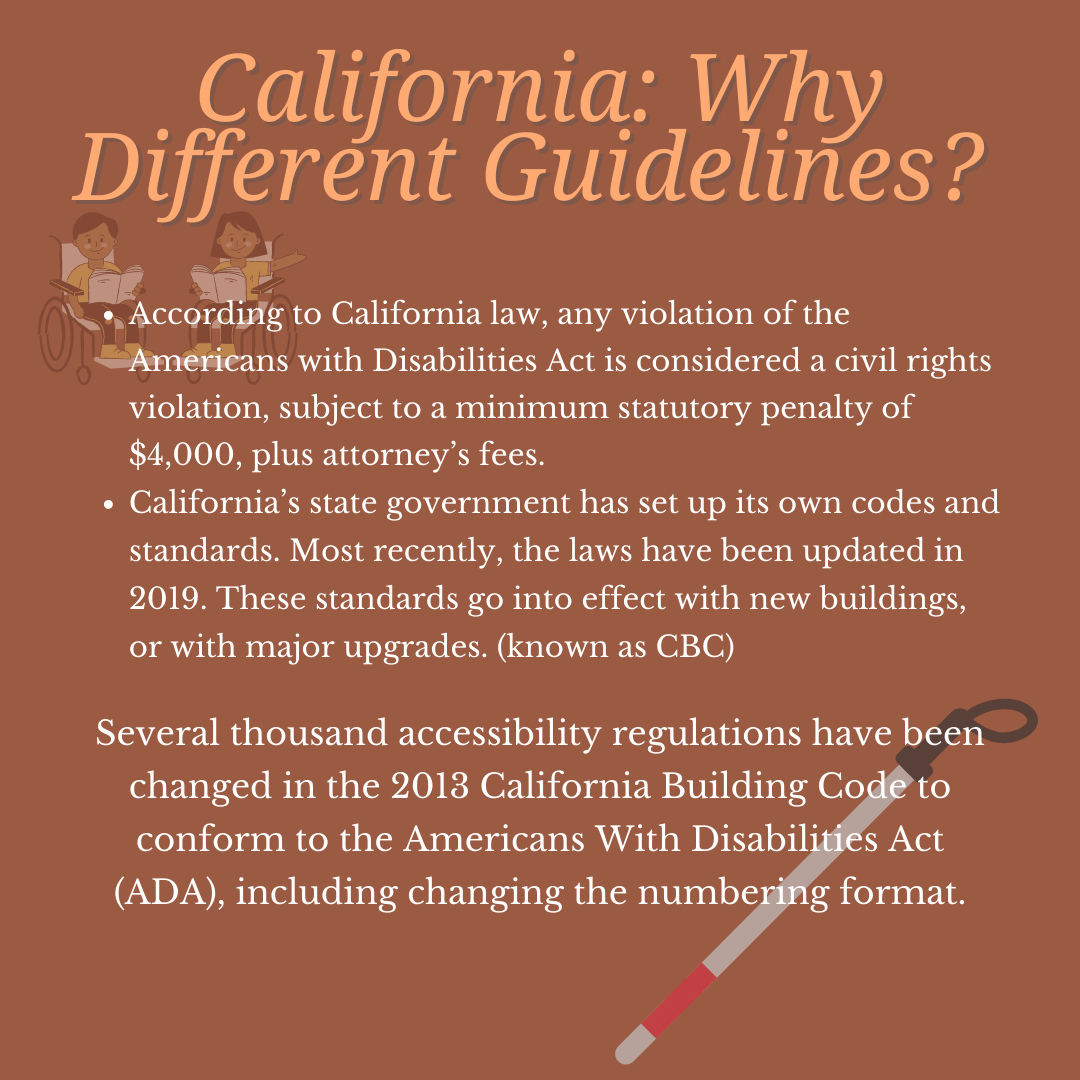
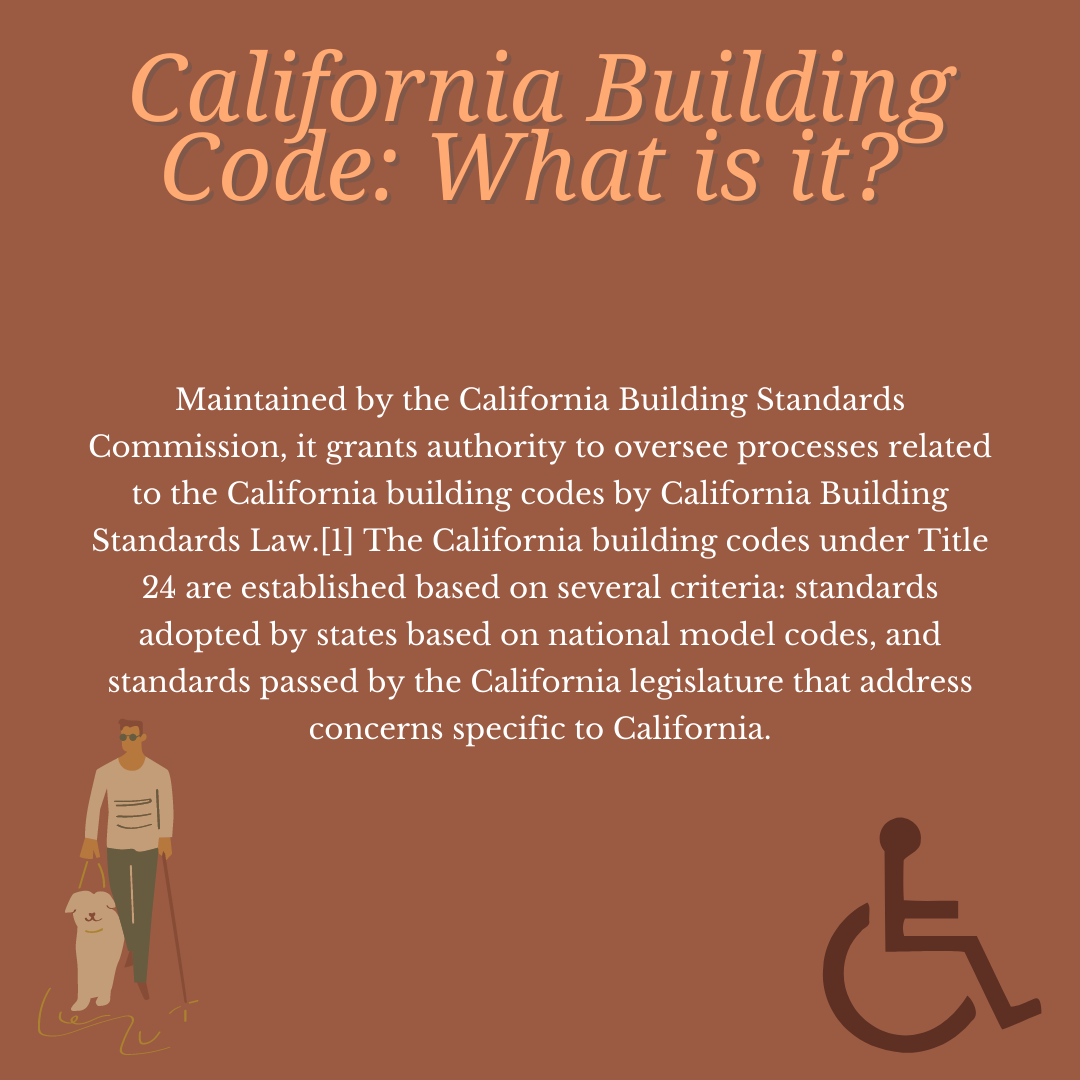
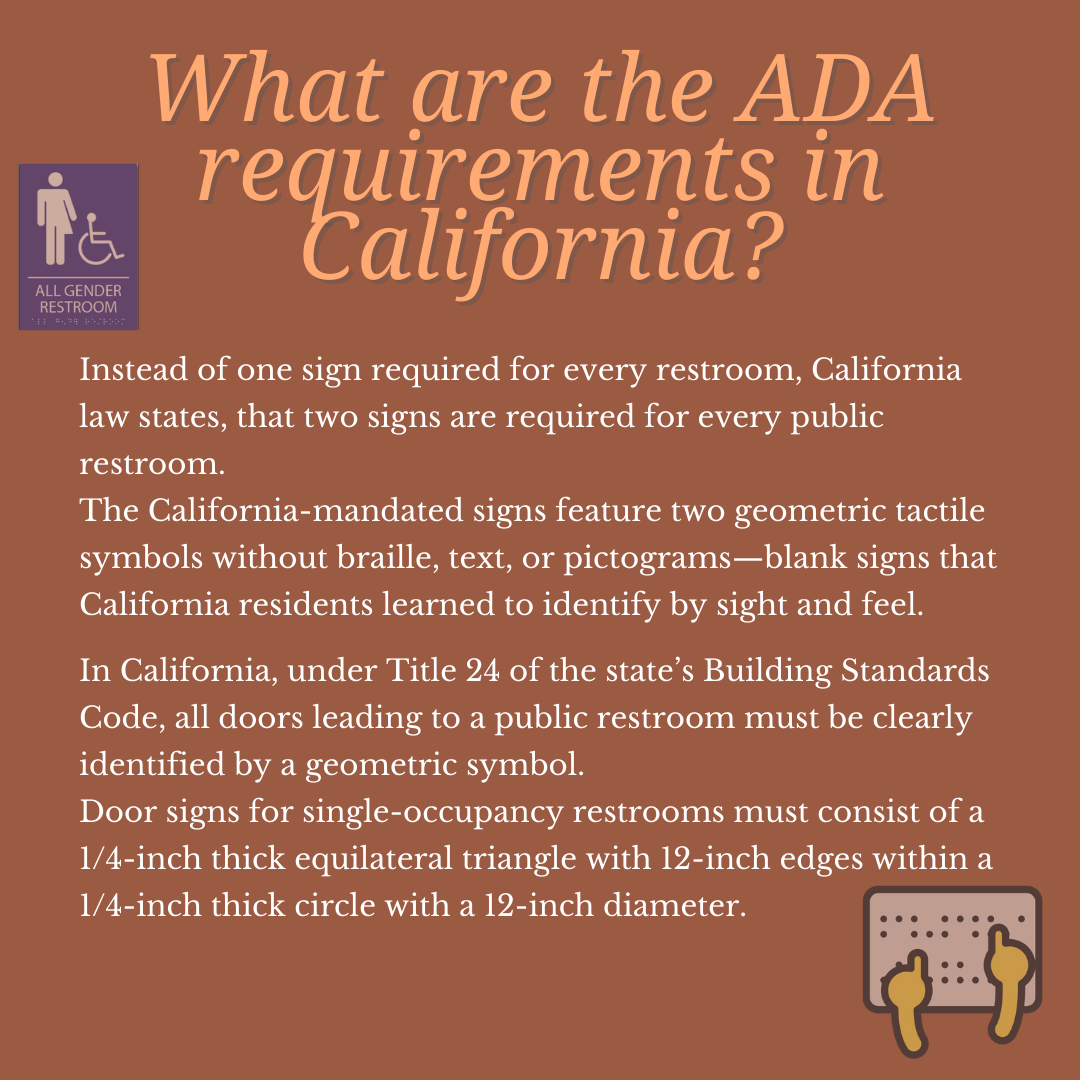
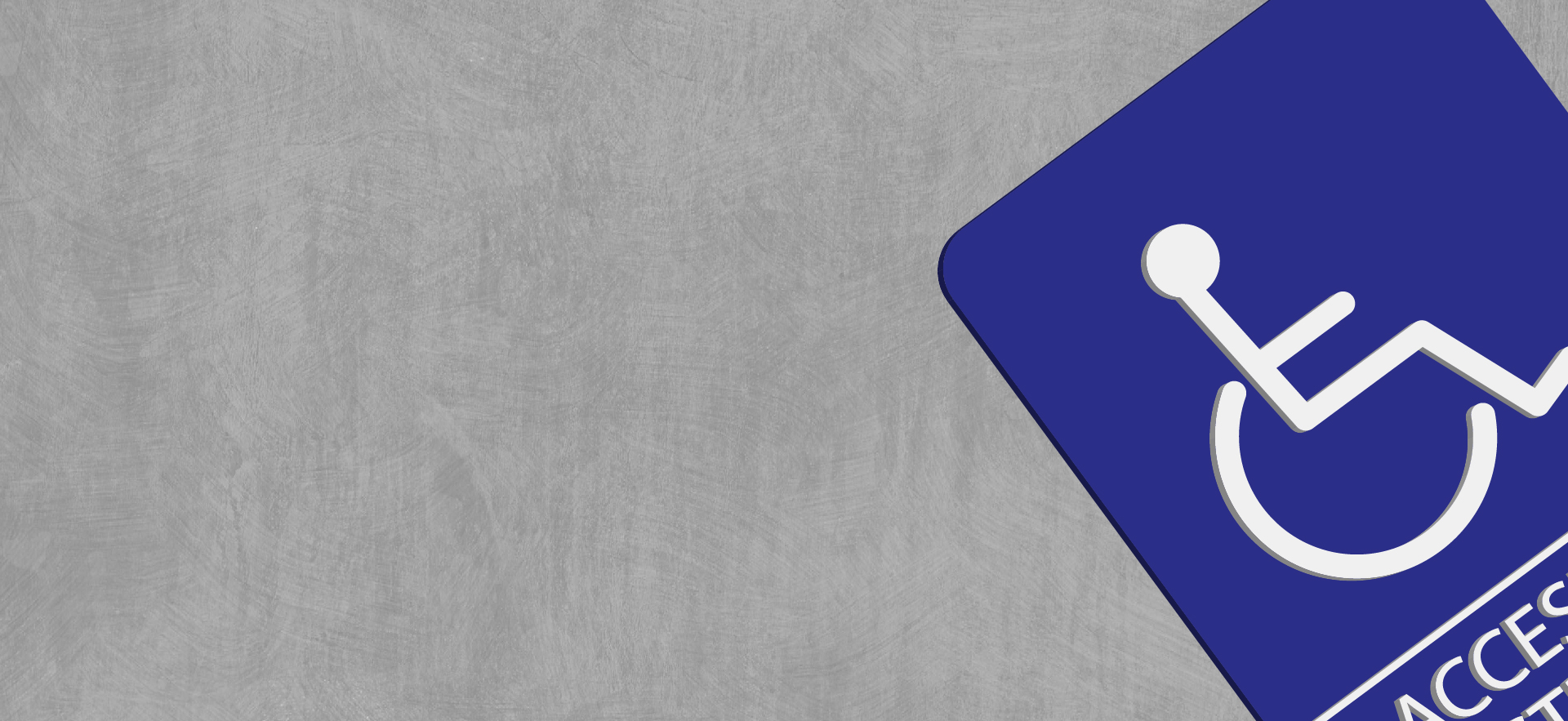



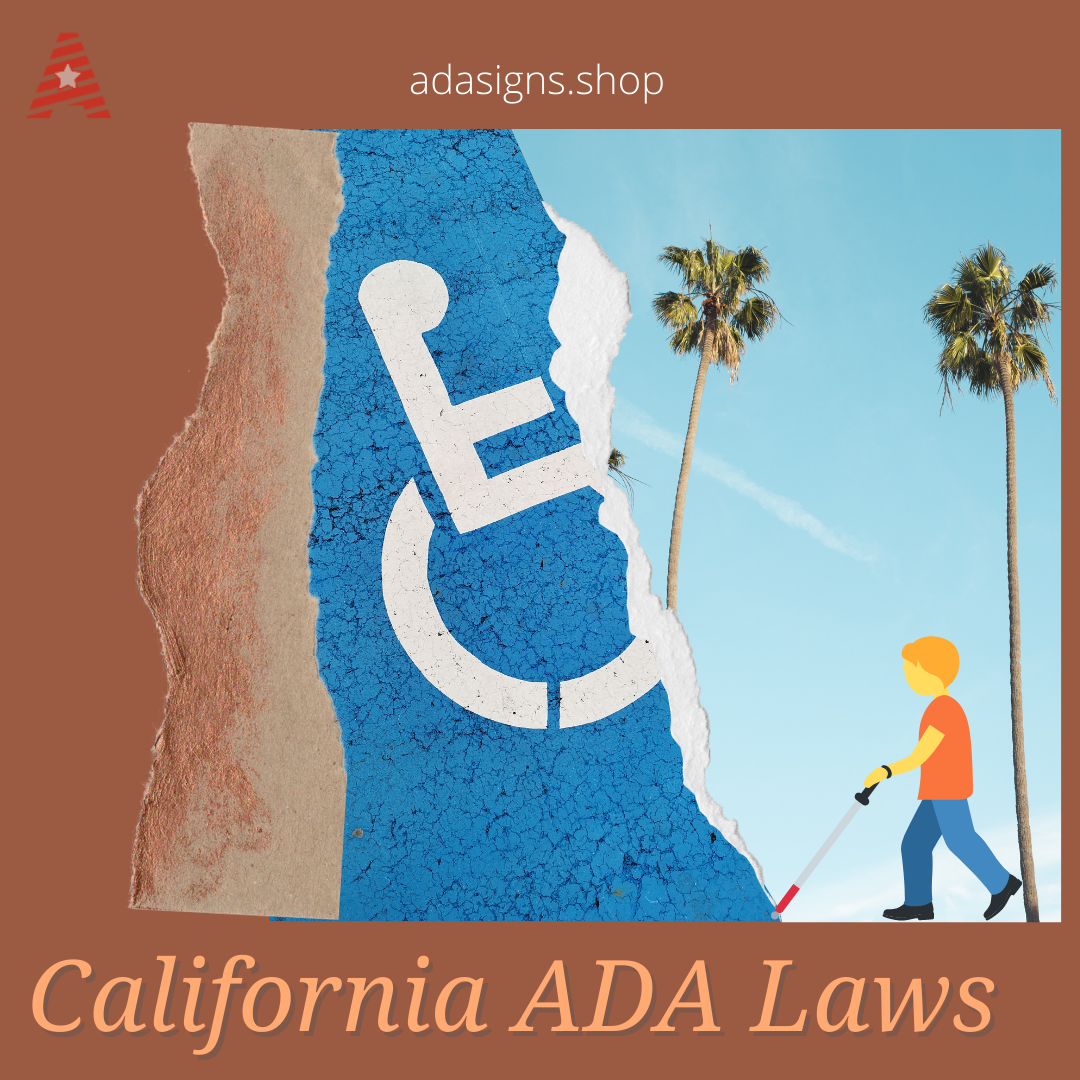

0 Comments